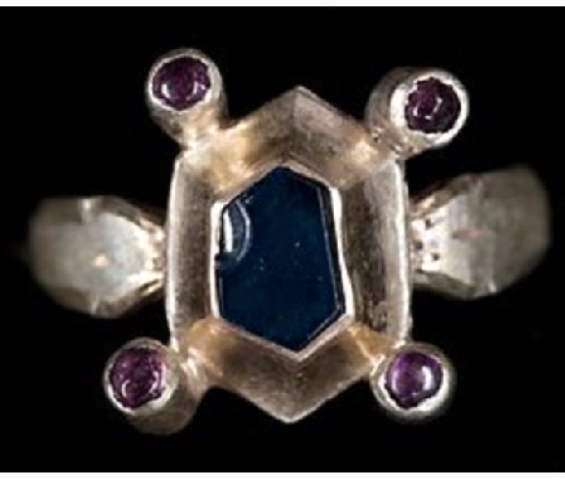The History of Wedding Rings

Medieval Jewelry dug-up in the backyard.- True Story!
In the history of wedding rings, there are hundreds of years between antique wedding rings of the past and contemporary wedding engagement rings of the present and a world of difference in materials and craftsmanship.
It's no secret, the gold wedding band, is the iconic symbol of love & intimacy that your true love places on your wedding ring finger at Christian wedding ceremonies. What's not so well known in The History of Jewelry is that Antique & estate wedding ring jewelry does not necessarily cost the earth and has developed its own language. Take, for example, the concept of the Promise Ring...
Interested to Find out About the Intimacy of Wedding Rings..
Medieval Rings
in
The History of Wedding Rings
When you step back in time and retrace the history of wedding rings and we find that the Christian betrothal ring was usually of gold from the 2nd century onward. It was not a plain gold band and might have inscribed with a legend. White gold wedding bands were unheard of during the Middle Ages.
Early Christian Roman gold marriage rings, have been found, but it wasn't until the 12th Century, that Pope Innocent III (b.1160-1216), one of the greatest Popes of the Middle Ages, first declared that marriages would take place in the church and that wedding bands should be exchanged during the service.
The symbolic linking of the couple that is expressed in the "dextrarum junctio" or the joining of hands persisted from ceremonies from Roman times. Traditional vows still include the line:
"I give you this ring as a sign of our marriage".
Around 350 later, King Edward VI affirmed which finger should be a wedding ring finger. He decreed that the third finger of the left hand be designated as the "official" ring finger, however it was the ancient Egyptians who first designated the third finger of the left hand, as the vein in the third finger, goes directly to the heart.
In Ancient Egyptian mythology, the heart ruled the head. Practicality may also have played a part though, because there's not as much wear and tear on finger rings worn on the left hand. (if you are "right handed")
In 1549, the Book of Common Prayer recorded in black ink, that the left hand was officially the marriage hand. In many European countries however, brides wear their wedding rings on the right hand. Antique wedding rings were now officially part of the wedding ceremony!
Throughout the history of wedding rings, the one constant is that they always represented the sealing of the marriage and sign of commitment to one another.
And what better way to seal a marriage than by choosing a symbol of love from the past born amidst romance and time honored wedding traditions.
If I had to choose between an antique diamond engagement ring or a modern "facette perfette" diamond engagement wedding ring, well, I think you know what I 'm going to choose
Even if that brand-spanking new diamond engagement ring is set with hearts-on-fire diamonds, cut according to Marcel Tolkowsky's "ideal" mathematical formula, named after the eight tiny hearts visible through the pavilion of a hearts-on-fire diamond. Tolkowsky is acknowledged as the father of the modern brilliant cut diamond.
Modern diamond cuts may be mathematically more perfect than antique diamond cuts. however, brand spanking new diamond wedding rings surprisingly are not every girl's best friend. The modern, perfect diamond cuts of today, remind some girls of a dental office - clean and precise but lacking in the old world charm and beauty of her ancestors.
Return to the top of History of Wedding Rings
Return to Antique Wedding Rings
Return to Antique Jewelry Investor Home Page
